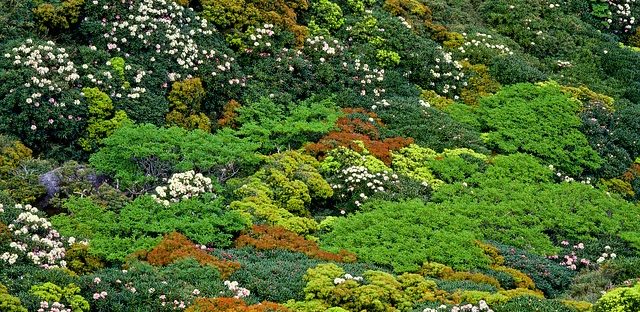- Target: Become a carbon free island by achieving a 100% renewable energy target.
- Status: Achieved
- RES: Hydropower, windpower, electric vehicle (EV) system.
- Implementation: Yakushima is the fifth biggest island in Japan, located South of Japan's main island, and part of Kagoshima Prefecture. The island’s main economic activity is the production of SiCO3. The total electricity consumption of 7500 million kWh per year is completely covered by renewables. Because of its unique scenery and specific ecosystem, most of the Island is part of the Kirishima-Yaku National Park and World Heritage Site. In 2009, the municipality committed to a “Carbon Free Island Yakushima” initiative and a 100% RE target. To achieve this, the plan was to expand hydropower, wind power systems, and install an electrical vehicle (EV) system. Since the power grid of the island is owned by Yakushima municipality, rather than Japan's mainland monopolies, the island is able to split its electricity services between three distinct activities; generation, distribution and supply side. The municipality owns the power grid, and three local cooperatives are distributing and supplying the electricity in the island, along with Kyusyu Power Company. Finally, Yakushima Denko Company is producing the electricity consumed on the island. It has been operating since the late 1950’s. The island benefits from excellent hydropower potentials: rainfall is around twice as much compared to the rest of Japan (4,500 mm per year) and the island has many waterfalls. In 1953, the island's first waterfall hydropower plant, Chihiro (1,000Kwh) began supplying the island with most of its electricity. Since then, the Awa hydropower plant (capacity of 10,9000Kwh) and the upgrading of the two power plants in 1979 – from 1,000 to 1,300Kwh for Chihiro and from 10,9000 Kwh to 32,000 Kwh for Awa power plant has been in operation. In addition, auxiliary thermal generators are used as backups in case of low rainfall and during maintenance, critical as the island is a closed electricity grid. For Yakushima’s community and stakeholders, renewable energy systems have provided the most robust and safe solution for them since the island is repeatedly impacted by water disasters such as typhoons or floods. In cooperation with Kagoshima prefecture, Yakushima has been investigating the potential of new transport technologies, such as EV, HEV and Fuel Cell Cars since 1990. The share of EV is still only in 1% in the island, but the local governments are now working with Nissan and Mitsubishi to develop new electrical vehicles completely powered by renewables. In order to promote EV, Kagoshima prefecture is offering financial incentives to buyers, as high as half the price of the vehicle. In relation to energy saving and awareness among civil society, the island promotes educational programs in school and public seminars, as well as a contest called “CO2 Diet” among inhabitants, to reduce energy consumption through behavioural and lifestyle changes.
- Population: 13,178 (2010)
- Area: 504.88 km2 (194.94 sq mi)
- Link: http://www.globalislands.net/greenislands/index.php?region=9&c=45

